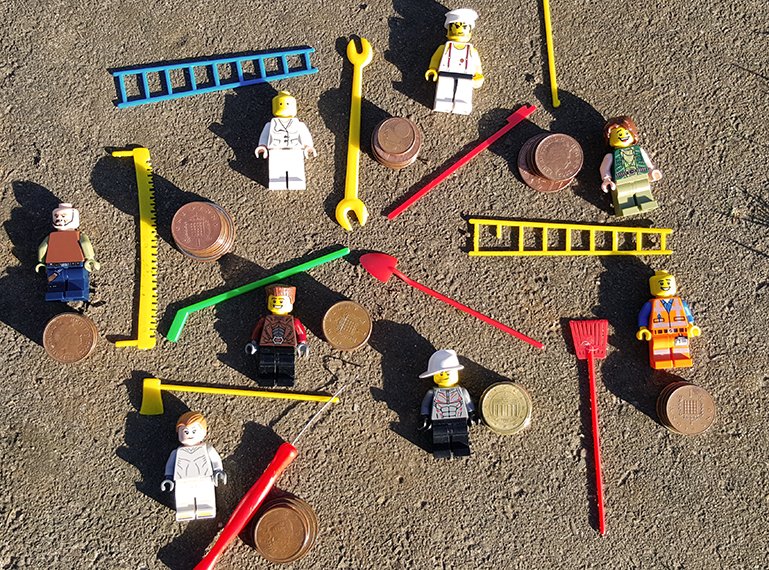Among all potential applications that Blockchain can assist to in the near future, making transactions open, decentralized, faster and without intermediaries is the one that draws more interest from developers and new start-ups around the globe. Nonetheless, blockchain started with cryptocurrencies and it’s in that field where more evolution has been taking place. The latest, EOS, has come to revolutionize the back-end technology where everything begins, shifting along the way the burned proof-of-stake and widening up the tired computing spectrum.
The starting point sets off with a wild ICO ecosystem that has seen the light after the cryptocurrency boom last year. This type of funding, in which new companies sell out stakes in the shape of tokens, or inner digital currencies, to get financial resources for the development of their ideas. These tokens are listed in crypto-exchanges, open to any investor to put their money in with the only hope that that company will go forward and settled.
Most of that ICOs, which is believed to have raised over $4 billion last year, have gone out of control, with reports of scam showcasing in the news every day and compromising a beyond-reach disruptive technology, the blockchain.
EOS, described as a decentralized operative system, aims to stop the growing scepticism towards these ICO funded and legit new companies through a revolutionize way of running the background end of any enterprise.
For that, the team behind the project has built a platform where other companies can develop their ideas. These entrepreneurs can benefit from a range of in-built tools, existing otherwise in other blockchain-based platforms, but deeply changed to overcome accredited flaws.
On one hand, the recently released EOSIO 1.1 portal, pursues to take up the long-running and inefficient proof-of-work scheme, which is commonly used to validate new data within the blockchain, and leverage a proof-of-stake instead. Their effort don’t end there and they have even developed a new delegated proof-of-stake (DPOS) to achieve its scalability consensus mechanism.
According to Blockgeeks, EOS’ delegated proof-of-stake works as it follows:
“Firstly, anyone who holds tokens on a blockchain integrated into the EOS software can select the block producers through a continuous approval voting system. Anyone can participate in the block producer election and they will be given an opportunity to produce blocks proportional to the total votes they receive relative to all other producers.”
There is no need in this system for all participants in the chain to validate the process – and agreed doing so -, as it turns into a delegated system where every participant vote to make the process validated, featuring a cooperative model instead of a competitive model (bitcoin mining). Also, users that stop “working” the blockchain will not be in consideration for future creation of blocks. This measure is to make sure that blocks are still adding in to the chain.
At EOS, they assure that through this system, blocks can be added every 3 seconds and thus the system “allows to million of transactions per second”.
On the other end, EOS platform has promised to remove third parties in any transaction made within their system and with them any inherent fee attached. Its smart contract has a lot to say about that and, while applications running on other platforms such Ethereum get caught in costly maintenance and high resources usage, EOS platform “works on an ownership model whereby users own and are entitled to use resources proportional to their stake, rather than having to pay for every transaction. So, in essence, if you hold N tokens of EOS then you are entitled to N*k transactions. This, in essence, eliminates transaction fees,” as said by the Blockgeek site.
“EOS’s ownership model provides DAPP developers with predictable hosting costs, requiring them only to maintain a certain percentage or level of stake, and makes it possible to create freemium applications. Furthermore, since EOS token holders will be able to rent / delegate their share of resources to other developers, the ownership model ties the value of EOS tokens to the supply and demand of bandwidth and storage,” was also mentioned in a recent inteview, praising EOS platform.
EOS system, therefore, provides a brand new way of using the blockchain cautiously. Thanks to its Delegated Proof-of-stake and shared ownership model, users follow cooperative manners rather than the competition saw in Bitcoin recently. This project has to be seen as the true evolution of blockchain as a back-end technology, whereas companies and users alike can take advantage of it. It is time to end the bad reputation that some ICO has rising up and start embracing the blockchain as it really was developed for.

Hernaldo Turrillo is a writer and author specialised in innovation, AI, DLT, SMEs, trading, investing and new trends in technology and business. He has been working for ztudium group since 2017. He is the editor of openbusinesscouncil.org, tradersdna.com, hedgethink.com, and writes regularly for intelligenthq.com, socialmediacouncil.eu. Hernaldo was born in Spain and finally settled in London, United Kingdom, after a few years of personal growth. Hernaldo finished his Journalism bachelor degree in the University of Seville, Spain, and began working as reporter in the newspaper, Europa Sur, writing about Politics and Society. He also worked as community manager and marketing advisor in Los Barrios, Spain. Innovation, technology, politics and economy are his main interests, with special focus on new trends and ethical projects. He enjoys finding himself getting lost in words, explaining what he understands from the world and helping others. Besides a journalist, he is also a thinker and proactive in digital transformation strategies. Knowledge and ideas have no limits.

























